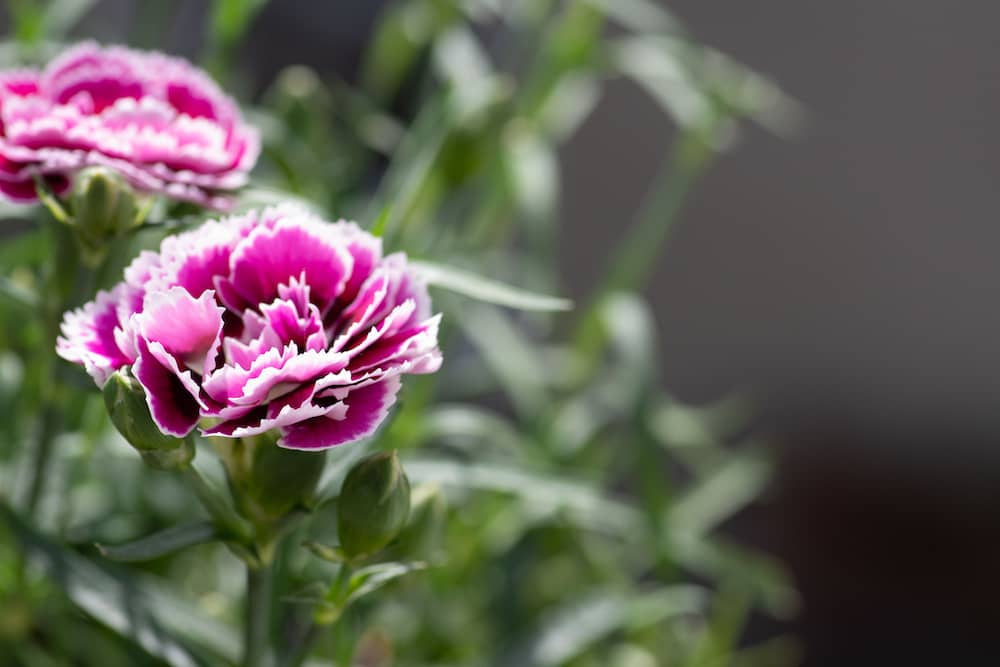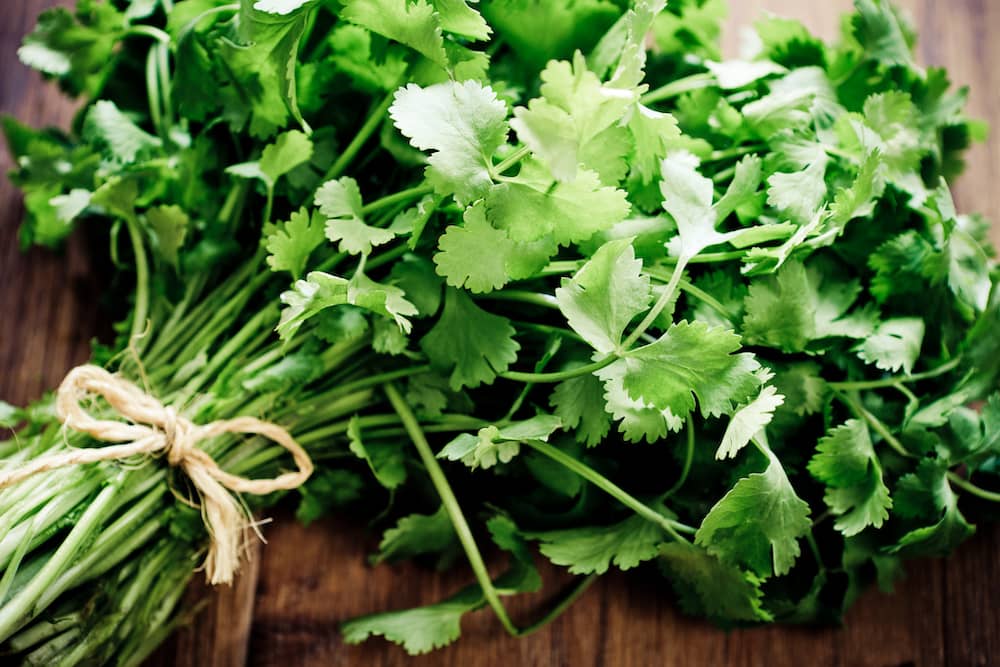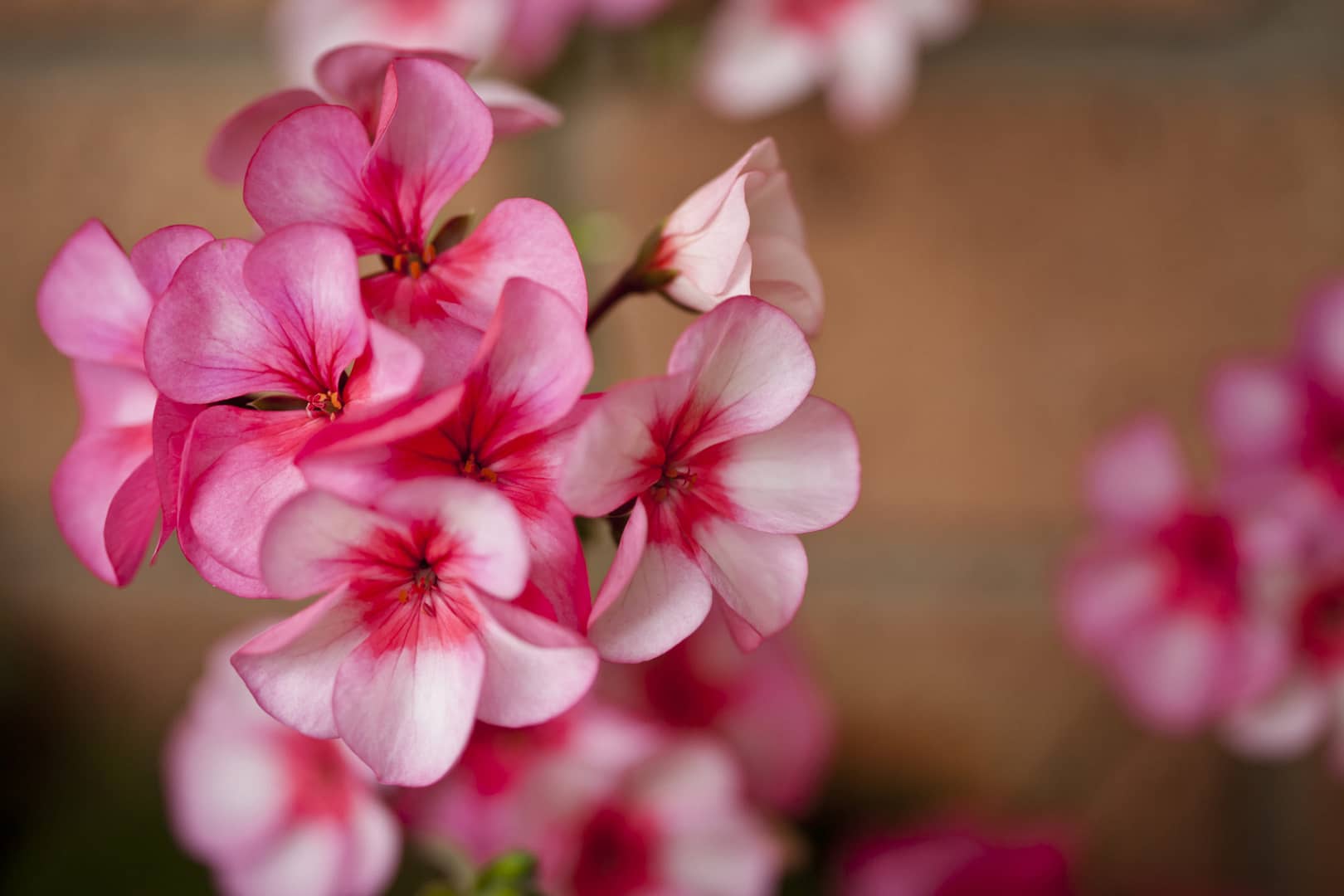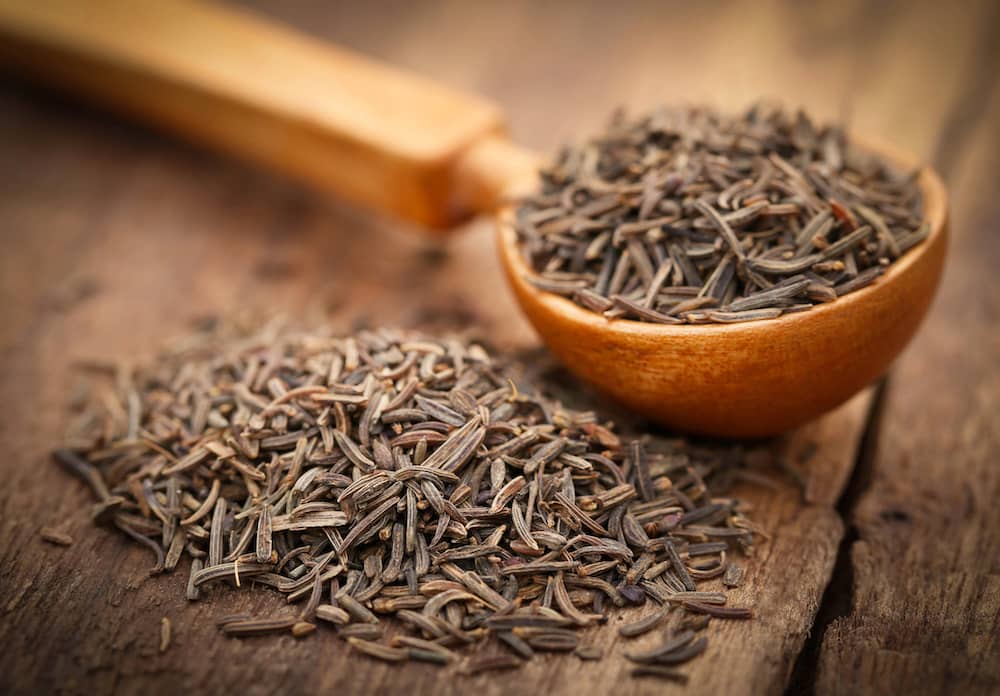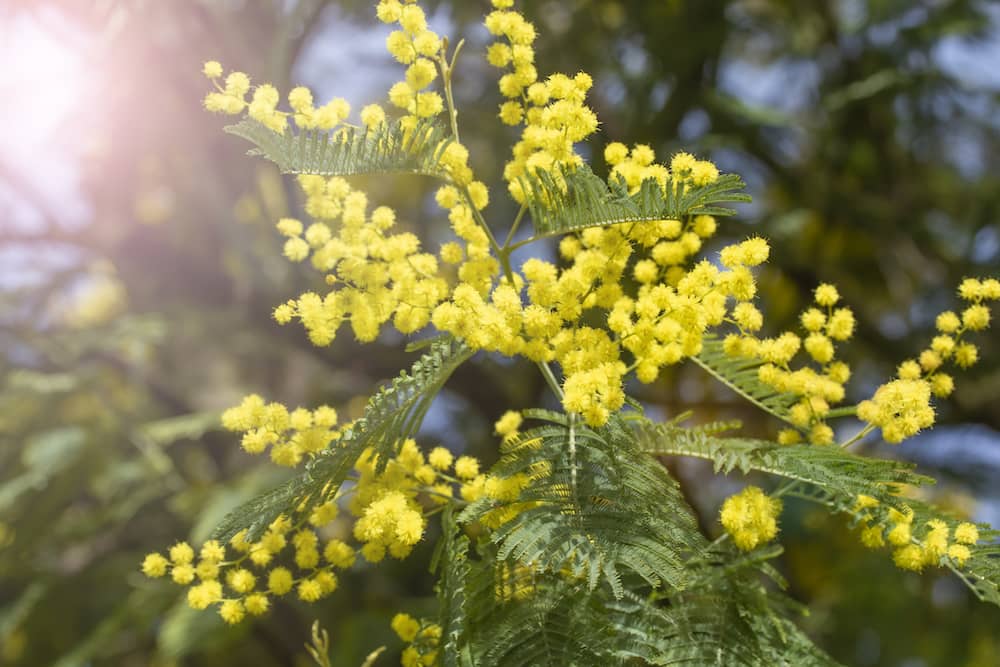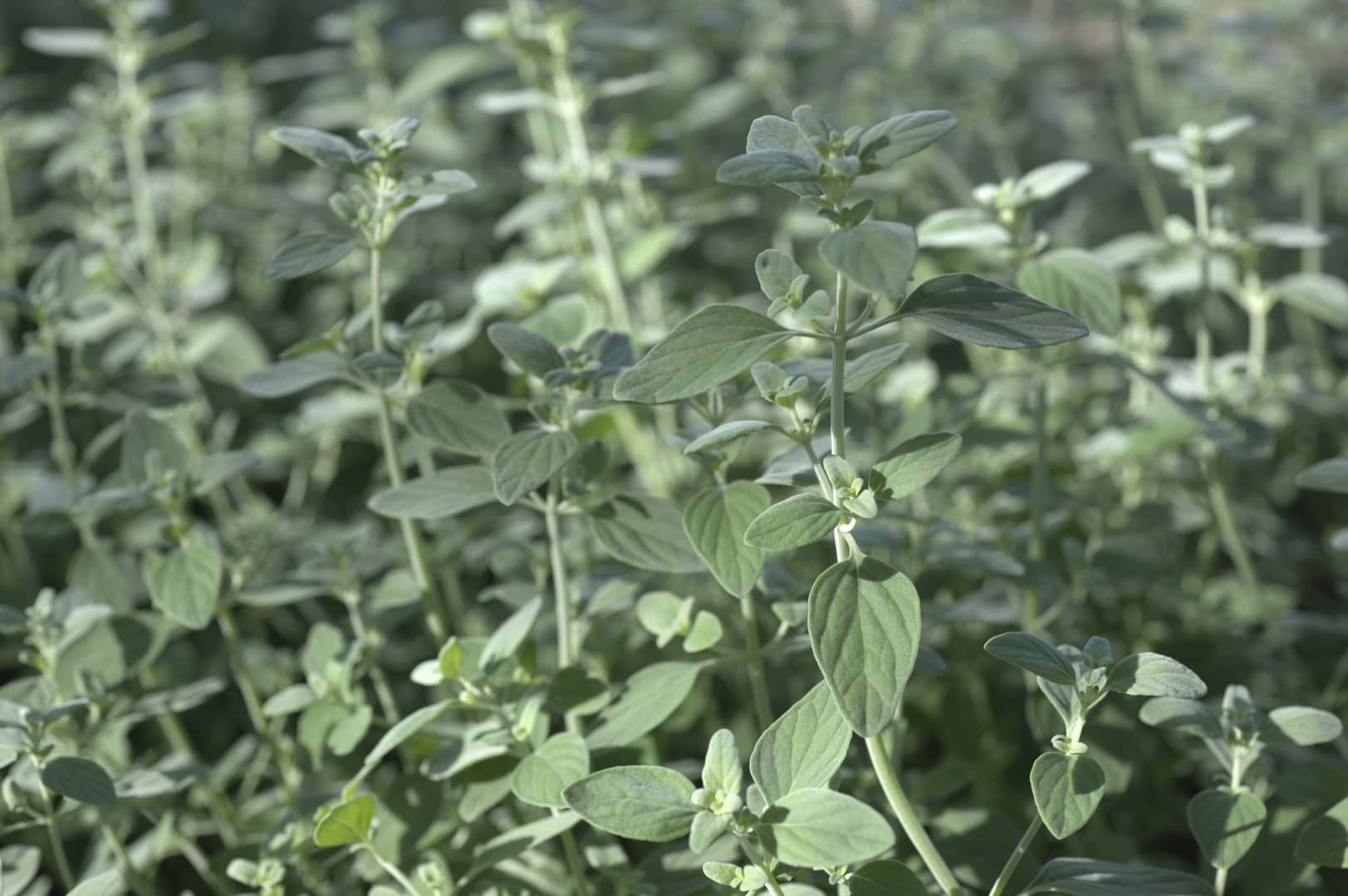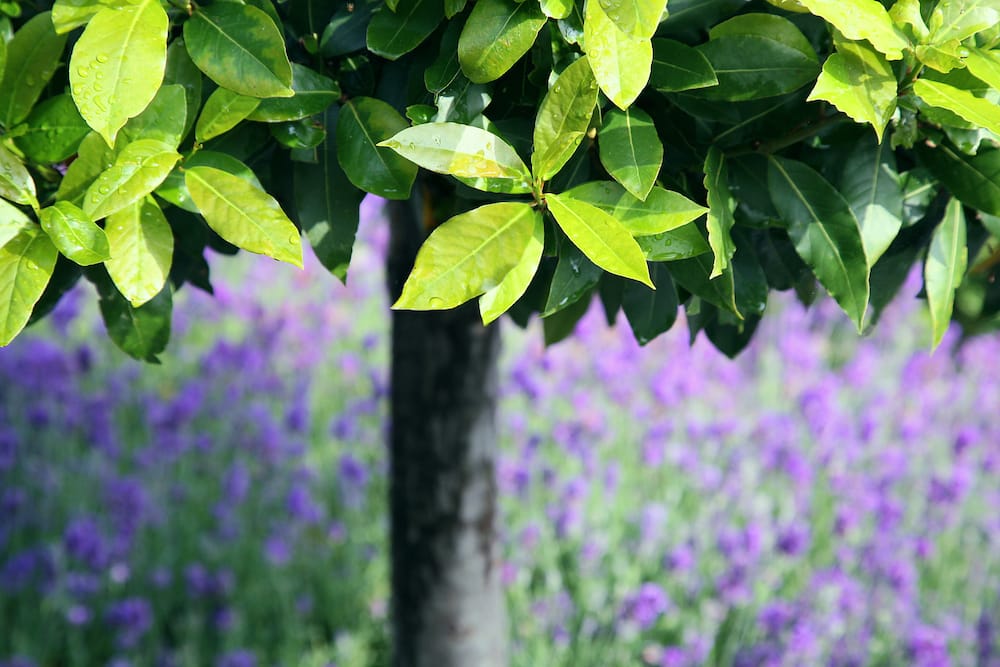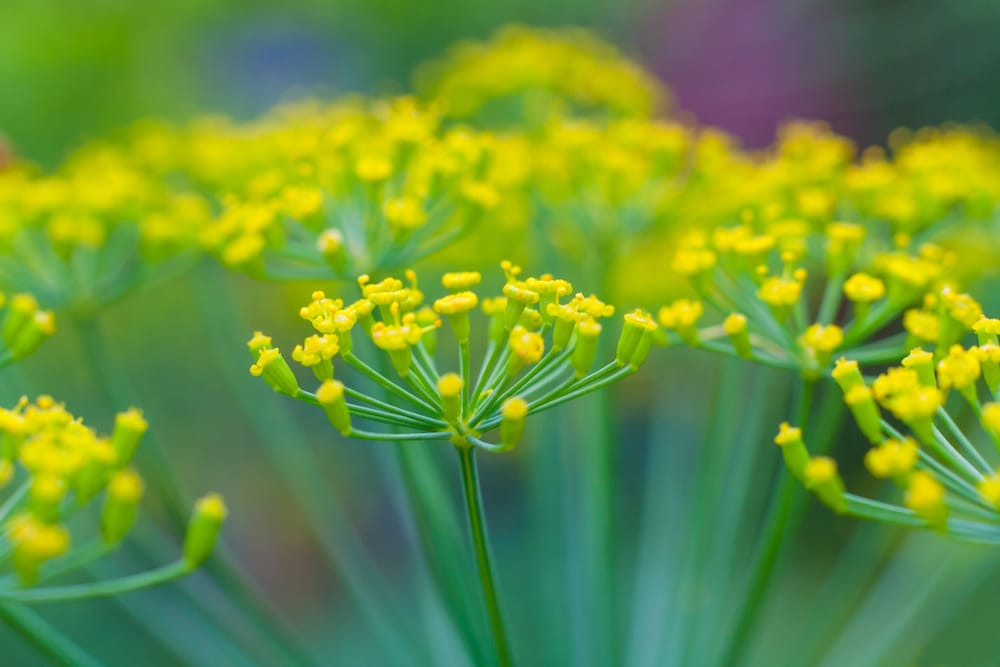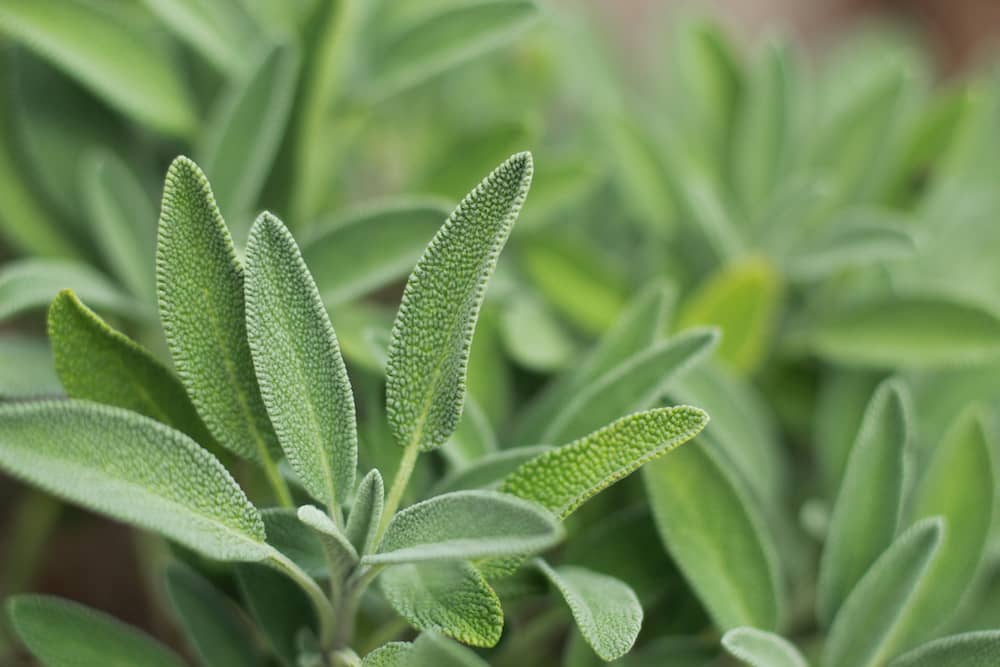Carnation – or what the Greeks called the “divine flower” originated in the Pyrenees. This legendary flower comes in an array of red colors with vibrant petal patterns. Carnations are favorites because the long stem leads to a broad flower with ribbon-like petals flowing from the center. Today, carnations are widely used in boutonnieres and corsages because the flower’s vibrant color and sturdy build make it the perfect accessory.
Like roses, carnations have different meanings based on the flower. A light-colored carnation signals admiration for a person, while a deep red carnation tells of strong, intimate feelings for another. In the United States, the carnation is the official flower of Mother’s Day.
Carnations are more than symbols; early Europeans used carnations in medicine for calming nervous system disorders and coronary problems. Ancient Chinese medicine used carnations as a vermifuge. Today, carnations and carnation oil have several medicinal uses. Its anti-oxidant properties fight cancers by reducing free radicals, anti-inflammatory properties reduce muscle cramps, and carnations powerfully settle an upset stomach.
Carnations don’t have as many uses in cuisine as they do in medicine. However, carnations are edible, and the spicy flavor pairs well in several dishes. Spiced wine, a Christmas-time favorite, is enhanced when substituting carnations for cloves. They’re a delightful snack when candied and have been a great addition to salads too.
Artiste is the best source for high-quality ingredients from around the world. Interested in knowing more? Need to know, ask Joe!
Morocco is where coriander originated, yet its power quickly gained popularity throughout the Mediterranean world. In Ancient Greece, coriander’s name derived from the pungent odor released when leaves get crushed. While ancient Egyptians used coriander seeds for romantic purposes, the Greeks and Romans flavored wine with these seeds. Coriander arrived in India and quickly became essential for flavoring food.
In the culinary world, coriander is everywhere. The lemon-like flavor in the leaves perfectly complements carne asada and other boldly flavored meat dishes. Coriander leaves – also known as cilantro – are a bright accent for tacos as well. Nearly every Indian curry counts coriander as essential. The bright flavor perfectly accents the fresh burst of ginger and other spices. Throughout the world, coriander seeds and leaves add depth of flavor to all dishes.
In health, coriander’s anti-inflammatory properties heal all parts of the body, including the brain. Coriander stabilizes moods through the reduction of inflammation. It also helps the brain fight off inflammation related to Parkinson’s and Alzheimer’s. Coriander releases salt from the bloodstream to fight high blood pressure and reducing inflammation keeps the heart healthy. People with upset stomachs also benefit from coriander. It reduces gas and bloating, along with eliminating free radicals from the digestive tract.
Artiste is the best source for high-quality ingredients from around the world. Interested in knowing more? Need to know, ask Joe!
Chamomile oil is found throughout continental Europe. There’s a slight difference between German and Roman varieties, but each provides the same benefits. Chamomile is a delicate flower with a light green stem holding a honeycombed yellow center with soft white petals extending outward. Whether purchased in fresh bushels or bags of the dried type, there are many culinary and medicinal uses for chamomile. Chamomile’s reputation for healing was renowned, and ancient Egyptians worshiped it as a dedication to the sun.
The most famous use of chamomile is in tea. Chamomile tea is best known for settling an upset stomach. The antibiotic properties of chamomile likely prevented many infections before the development of pharmaceuticals. In Medieval Europe, chamomile’s reliability as a vermifuge kept many from suffering from intestinal distress. Chamomile also kills lice and mites, allowing hair to shimmer as beautifully as healthy the underlying scalp. Because chamomile gets the body to sweat, it’s an excellent tool for people suffering from fevers.
There are other medicinal benefits, including stress reduction, anti-inflammation properties, and even mood stabilizers.
In today’s culinary world, chamomile has unique uses – for example, some restaurants infuse chamomile in ice cream. Its conventional use is tea, but the fruity, apple-like aroma appears in Spanish sherry and English beer. Mixologists are turning to chamomile to create exciting interpretations of classic cocktails and create new drinks for people to enjoy.
Artiste is the best source for high-quality ingredients from around the world. Interested in knowing more? Need to know, ask Joe!
Southern Africa is the home to Geranium, a soft flower with elliptical purple petals with deep violet flecks towards the inner part of the flower. It originated in Africa and then cultivated for centuries in Europe and Asia. Later cultivations include different colors, shapes, and petals. Geranium’s healing power and fragrant aroma delight everyone it meets. Europeans brought geraniums to the continent in the 1600s, and they quickly became a symbol of wealth and beauty.
One of many uses for Geranium is creating unique fragrance. Geranium’s scent is similar to rose, but there’s a hint of lemon within. The scent’s lack of powder is why many high-end perfumes use it in their creation. The ile-Bourbon Geranium’s scent is most prized because its rosiness includes fruity and minty notes.
The culinary world uses Geraniums to flavor desserts. Victorian rose cake, pound cake, and all types of fruit jellies use Geranium flavoring. Just as lemon is part of the scent profile of Geranium, the sweetness of the flower’s extract enhances lemonade.
For centuries, there’s been prolific use of Geranium for healing. Geranium has anti-inflammatory properties. It heals skin infections and reduces acne when applied to the skin. Geranium also helps ward- off the effects of Parkinson’s and Alzheimer’s diseases. Inflammation is reduced with the use of Geranium. It also works to relieve the stress of anxiety, lifts people out of depression, and helps people cope with the pervasive pain of shingles.
Artiste is the best source for high-quality ingredients from around the world. Interested in knowing more? Need to know, ask Joe!
Cumin’s origins are in ancient Egypt. Its fame slowly spread throughout the Middle East and is one of today’s most used spices. Cumin’s adaptability to all climates is why it’s a favorite around the world. Whether the environment is warm and dry or cool and temperate, cumin is easy to grow. While it resembles caraway seeds, there are some differences in culinary use.
Cumin is widespread throughout the culinary world. With an earthy aroma that’s spicier than caraway seeds contrasting with the light burst of citrusy flavor, cumin imparts complex flavor into meats, sauce, and many other dishes. Indian curries and chutneys feature cumin paired with different spices like coriander, ginger, and saffron. Mexico’s rich mole sauce gets its earthy flavor from cumin to contrast the sweetness from the chocolate.
Cumin offers plenty of cosmetic benefits. Cumin oil reduces the plaque formations in psoriasis, softens skin, and hydrates hair to create the desired shimmer. Besides lowering cholesterol and high blood pressure, the anti-inflammatory qualities in cumin ease the pain of rheumatoid arthritis. People with asthma experience more minor episodes with a diet including cumin because it prevents the airways from tightening during exercise stress.
Artiste is the best source for high-quality ingredients from around the world. Interested in knowing more? Need to know, ask Joe!
Cassie is native to Egypt, but its renowned therapeutic and aromatic reputation gained fans throughout the Mediterranean and New World. Today, the round, yellow dandelion-like flower is cultivated worldwide, but especially in warm temperate climates. Cassie’s aroma is warm and sweet but not overpowering. The light powdery quality invokes similarities to cinnamon and balsamic, while the subtle spice balances out the fragrance.
The perfume industry enjoys liberal use of cassie. Because cassie has a complementary quality, it adds intensity to perfumes. The most famous use of cassie is in Frederic Malle’s luxury perfume Une Fleur de Cassie. Other applications for using cassie are rose, jasmine, and violet accords. Cassie is mainly found in high-end perfumes.
In medicine, cassie is similarly renowned. The flower has several medicinal uses as an antiseptic and anti-inflammatory remedy. People who have rheumatoid arthritis find relief drinking tea infused with cassie or taking cassie supplements. In the ancient Mediterranean world, doctors used cassie to treat sore throats and upset stomachs. Today, those doctors from long ago are validated because cassie has the same uses. Cassie treats cuts and wounds effectively, allowing people to heal without painful scarring or skin discoloration.
Artiste is the best source for high-quality ingredients from around the world. Interested in knowing more? Need to know, ask Joe!
The fluffy white flowers on the bushy evergreen white macromeria shrub are commonly known as Taurus Mint. This plant grows throughout the Eastern Mediterranean; it’s common in the Israeli and Arab world to use Taurus Mint for perfumes, health benefits, and different cooking recipes.
White macromeria is also known as Taurus Mint because the flower and leaves have a mint scent without the overwhelming nature of menthol. Taurus Mint stands in mint in many dishes; for example, an Israeli salad or a roasted fish using Taurus Mint is less overpowering if used in place of traditional mint. However, the most common applications are in tea and soup. Taurus Mint tea is renowned for its therapeutic properties.
Taurus Mint is revered in the Middle East for its ability to help people heal. This traditional remedy helps heal eye infections, heart problems, wound care, and even high cholesterol. Since traveling is a significant part of traditional Middle Eastern lifestyles, Taurus Mint tea has always been a key greeting for weary travelers. It soothed their aches and pains from their journeys.
The fragrance world also takes advantage of the subtle power of Taurus Mint. The flower and leaf are distilled into oil, and it’s combined with other complementary scents. Many lotions and balms from the Middle East contain Taurus Mint.
Artiste is the best source for high quality ingredients from around the world. Interested in knowing more? Need to know, ask Joe!
For many people, the Laurel Leaf is better known as the bay leaf. The reason for the alternate name is Laurel Leaf is actually the name of nearly 300 different species of leaves used for the same purpose. As one of the world’s most cultivated herbs, it’s impossible to find a spice cabinet without Laurel Leaf occupying a prominent position. In fact, ancient Greek and Roman cultures used Laurel Leaf to honor victors in sport and combat.
The culinary world relies on Laurel Leaf’s bitter, sharp taste to impart flavor into slow-cook meals. Stews, braises, and other meat dishes relying on the low/slow combination extract flavor from Laurel Leaf. Mediterranean dishes including pasta fagioli and zuppa di pesce use the Laurel Leaf to balance the bright acidity of citrus ingredients. Hearty dishes like beef bourguignon use Laurel Leaf to deepen flavor and counter the sweetness released by the vegetables.
The perfume industry values Laurel Leaf for its herbal notes. This fragrance adds complexity to many perfumes because it allows the sweet notes to play off it’s Earthy nature. Jo Malone London is a perfume known to make use of Laurel Leaf.
The ancient Greeks and Romans valued Laurel Leaf’s anti-inflammatory properties. Laurel Leaf is an anti-inflammatory. People suffering from arthritis, gout, and muscle soreness turn to Laurel Leaf because it neutralizes the causes of inflammation. Additionally, Laurel Leaf helps the brain. Many people report better cognitive function including an increase in memory thanks to Laurel Leaf. This herb truly does it all.
Artiste is the best source for high-quality ingredients from around the world. Interested in knowing more? Need to know, ask Joe!
Very few ingredients have the backstory of Fennel. In Greek mythology, Prometheus steals the fire ember and hides it in a hollowed-out stalk of Fennel. The town of Funchal on the Portuguese island of Madeira is a derivation of the Portuguese word for Fennel, funcho. Henry Wadsworth Longfellow’s poem The Goblet of Life told of Fennel being the cure for poor eyesight. While the myths about Fennel are exciting, the reality of Fennel’s benefits is more intriguing.
Fennel Oil is found in many perfumes because it combines sweet and peppery elements. It’s the perfect complement for scents like sandalwood, lavender, and rose. Fennel Oil’s scent properties are in most high-end perfumes sold at stores like Nordstrom.
In medicine, Fennel has many uses. Fennel is among the best cures for indigestion, hiccups, and bloating for people suffering from gastrointestinal distress. Cosmetically, Fennel offers solutions to many everyday problems. Fennel provides simple solutions instead of costly dermatological or make-up solutions, whether it’s bruising or balancing oily skin. Also, Longfellow was correct – Fennel improves eyesight.
Fennel has a wide variety of uses in cooking. The yellow Fennel flower is the most potent concentration of the flavor in the plant. However, the bulb, stalk, and feather-like leaves are equally helpful in cooking. Fennel is helpful as an alternative to onion in many dishes. Fennel is in many Italian salads; it’s also great for adding texture to braised beef dishes. One of the simplest and most effective uses of Fennel is roasting it with fish. Fennel plays beautifully off citrus has everything from cod to salmon, showcasing incredible flavor.
Artiste is the best source for high-quality ingredients from around the world. Interested in knowing more? Need to know, ask Joe!
Whether calling Greek Sage, Sage Triloba, or by its scientific name of Salvia Fruticosa, there’s no disputing the versatility of this herb. Sage Triloba originated in the Aegean islands and exported by Greek growers to the rest of the Mediterranean. Today, Sage Triloba is approximately 95% of the sage sold in America’s supermarkets.
The culinary uses of Sage Triloba have ancient roots and contemporary comforts. Thanksgiving turkeys make liberal use of Sage Triloba, and the best chicken salad sandwiches include Sage Triloba, basil, and thyme. It’s not just for poultry; Sage Triloba is in teas, pastries, and it’s also an aromatic garnish for plating.
Sage Triloba’s many medicinal uses make it a wonder-herb. Its textured leaf promotes scar healing and balances oily facial skin. The ancient Greeks relied on Sage Triloba to reduce coughs and clear out congested lungs. Sage Triloba is also one of the world’s earliest anti-microbial agents. It’s perfect for disinfecting wounds and keeping the body free of unwanted germs.
The ceremonial use of Sage Triloba dates back to ancient times. Muslim traditions are part of welcoming newborn children to the world, celebrating marriages, and honoring lives well lived at funerals. Sage Triloba is burned as incense at many Muslim ceremonies, and in the Western world, burning Sage Triloba is how unwanted spirits are cast out of a space.
Artiste is the best source for high-quality ingredients from around the world. Interested in knowing more? Need to know, ask Joe!
Phone: (201) 447-1311 | Email: jraimondo@artiste.us.com

